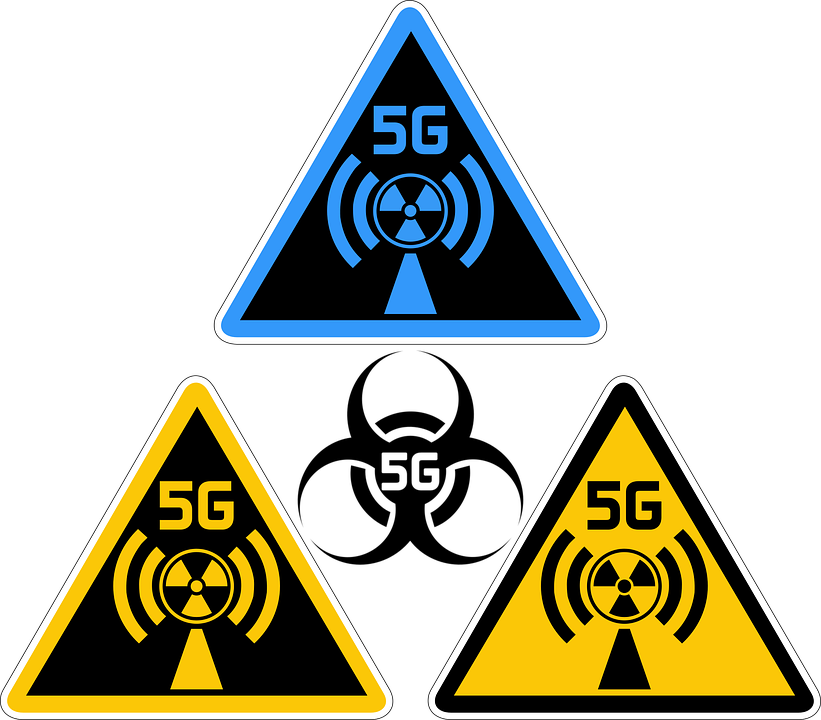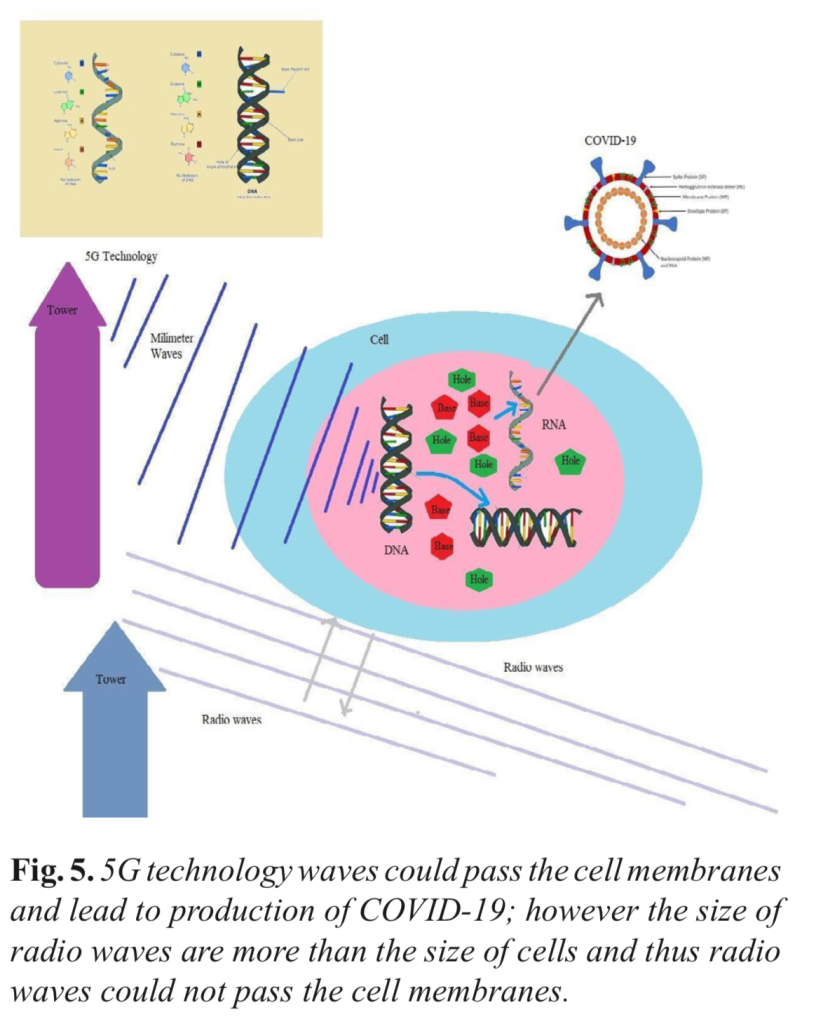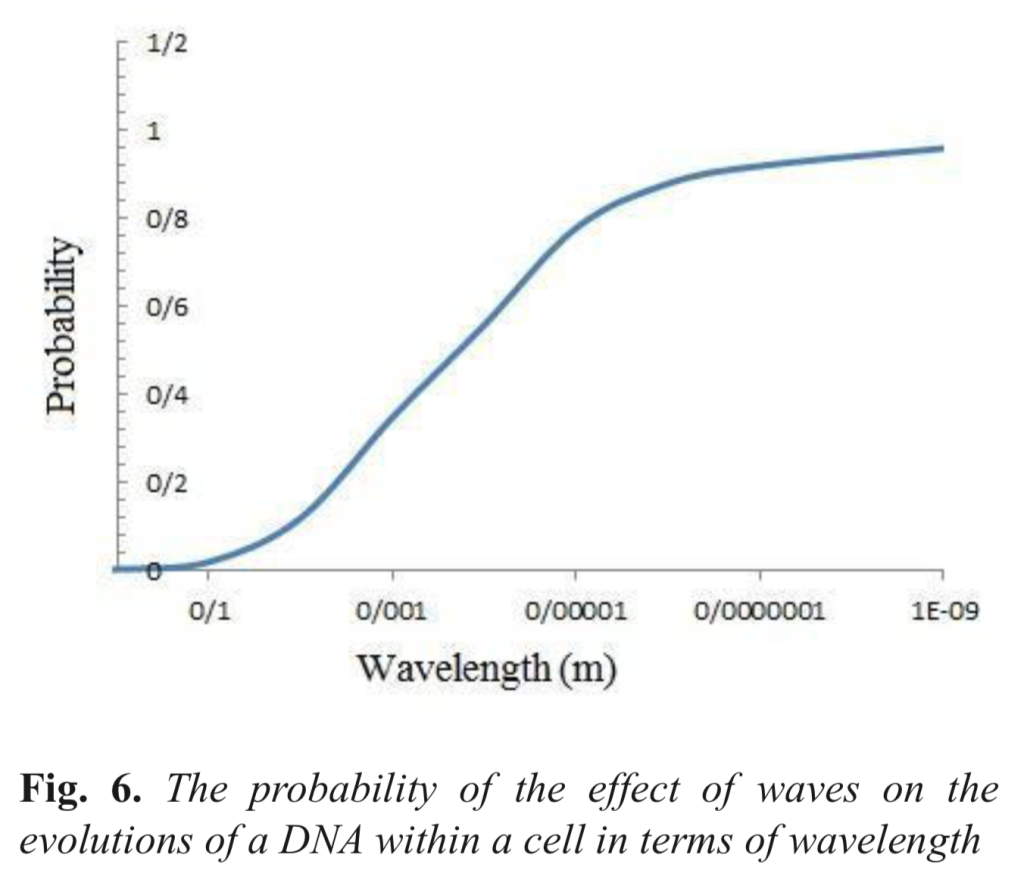Every once in a while, a strange paper slips through the cracks. Not strange as in creative or unusual, strange as in “this cannot be right”. In this case, the paper made waves by claiming that 5G radiation produces viruses, through… some mechanism.
“It is just a wacko hypothesis” was one of the expert comments, and it wasn’t the harshest one.

Buzzwords: 5G and coronavirus
The paper was bound to get a lot of attention when it brings together two hot topics like coronaviruses and 5G, but this is probably not the type of attention the authors were aiming for.
Let’s skim through the paper a bit. Don’t worry, it gets very weird very fast.

So… 5G waves produce Coronaviruses. OK, that’s quite a claim (why coronaviruses, as opposed to other viruses, water, beer, or hedgehogs, is anyone’s guess) — but maybe they explain it in the methods.
The methodology section starts with some rather interesting drawings.

As far as anyone can understand, waves go in, stuff happens, and coronaviruses come out. There is no real attempt at an explanation.
The paper then continues with a ton of complicated equations (presumably meant to dissuade anyone from asking any questions), but yet again nothing is explained about how coronaviruses could be produced by radiation.

Then, as science watchdog Elisabeth Bik notes, the next figure is peak pseudoscience:

A curve that goes up towards 100% probability, basically reaches it, but fails to reach the higher probability of… 1/2.
The references are also a piece of pure joy. For instance, the authors write:
In another study, it was argued that 5G technologies cause great harm to human health. Cancer is only one of the many problems. 5G causes 720! (factorial) different diseases in human beings, and can kill everything that lives except some forms of microorganisms.
Quick math: 720! (720 factorial) is a big number. How big? Well, it’s bigger than the number of atoms in the universe, so maybe the claim is a teeny tiny bit wrong.
Which brings us to the next question.
How on Earth was this published?
Any paper that comes up with a wild idea and then provides no evidence to back it up isn’t a scientific paper. So how does it get published?
As Bik notes, one of the authors, Alireza Sepehri, is not a stranger to controversy:
“He wrote several preprints and articles in which he decapitated 400 birds to prove they can still live without a head, implanted beans into another bird to create new life, and claimed that DNA of a woman will irradiate waves that are canceled by male DNA.”
Massimo Fioranelli, another study author, worked with Sepehri before on other dubious papers. In one paper, they propose infecting pregnant women with influenza virus to reveal the gender of the fetus, and in another, they propose treating cancer in men and women by using treatment with cells from the opposite gender. Several of their papers are indexed in scientific publications.
The paper has now been (thankfully) withdrawn, but the fact that it was published in the first place is concerning enough. This paper is supposed to have been peer-reviewed, but it’s impossible to imagine this passing any form of reasonable peer review.
To understand how papers like this one sometimes slip through the cracks, we need to talk a bit about science publishing.
Every single week, a lot of studies get published — a lot. A conservative estimate puts the figure at 1.8 million scientific papers a year. None of these study authors get paid. Most of the experts who vet these papers (through a process called peer review) also don’t get paid. Instead, the money goes to the journal where these are published. So journals have an incentive to publish as much as possible.
There are many thorny and counterproductive consequences to this incentive, but one of them is the emergence of predatory journals. Predatory journals are exploitive journals where authors pay to get published and no one really looks at the quality.
The journal in which this paper was published is indexed in PubMed, a free biomedical database, which is usually a seal of approval for legitimate journals. It’s not clear how this paper slipped through the cracks, but there’s a silver lining to all of this.
In a sense, the fact that this paper was shredded by experts is a sign that the scientific process works. Nevertheless, the fact that papers like this can get through is concerning.
Why this is such a problem
Obviously, no one familiar with the scientific process (whether it’s biology or not) could look at the paper and not see it’s complete rubbish. You don’t need to understand biology or electromagnetics — there is a very strange hypothesis for which no proof is presented. It’s as simple as that. You can just see the lack of proof and understand it’s not serious. The drawings and other errors are just the cherries on top of this miserable cake.
Simply put, this isn’t science — it’s what people who don’t understand the scientific method believe is science.
But with all the baseless conspiracy theories going around, papers like this one can do a great deal of harm by giving these conspiracy theories something to cling to. It won’t matter that the paper is simply not science; it can be used to fuel these conspiracy theories. Between anti-vaxxers, the demolishing of 5G towers, and people refusing to acknowledge COVID-19, we’ve already seen how much damage conspiracy theories can do, and papers like this are the last thing we need.
The paper might make you laugh, but it poses a serious problem. It can be misused and cause real damage. Thankfully, the paper has been withdrawn (which makes 26 papers about COVID-19 that have been retracted), but researchers are already calling for the ban of the journal from PubMed. If something like this slipped through, there’s no telling what else can. No one from the journal has replied to our request for comment.


